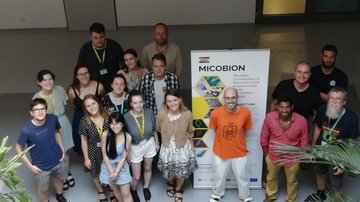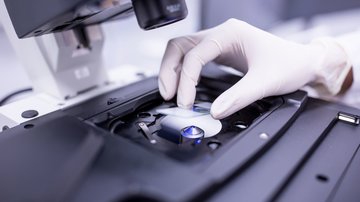
Imaging Methods
How to live without oxygen?
Our parasitologists in BIOCEV discovered anaerobic peroxisome in free-living Mastigamoeba balamuthi. The article was published in the current issue of Proceedings of the National Academy of Science of the USA.
Majority of organisms on our planet need atmospheric oxygen. However, some protits and metazoans are able to live in niches with low oxygen level or anaerobically. These organisms may represent either remnants of anaerobic period of Earth ocean history or organisms that secondarily adapted to live without oxygen. The adaptation to anaerobiosis is reflected by the reduction of mitochondrion, a center of oxygen metabolism, and loss of peroxisomes that evolved to protect cells against hydrogen peroxide and other toxic products of oxygen metabolism.
However, the free-living anaerobic protist Mastigamoeba balamuthi is an organism that contradicts this paradigm. Research team of Jan Tachezy at Charles University, Faculty of Science – BIOCEV discovered that Mastigamoeba harbors a novel type of peroxisomes that lack oxidases generating hydrogen peroxides and possess pathways that are exclusively oxygen-independent. The discovery of so called “anaerobic peroxisomes” provides a new perspective for studies of the evolution of eukaryotic cells and reconsidering the role of oxygen in the evolution of peroxisomes.
Original article: HERE
Prof. Jan Tachezy is head of projects MICOBION and Center for Research of Pathogenicity and Virulence of Parasites



















